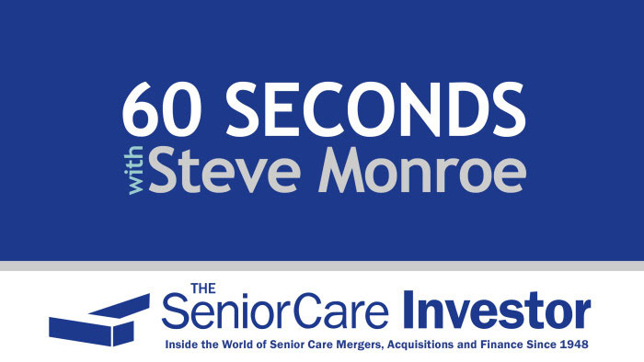


Seniors Housing Cap Rates On The Rise
For the first time since the Great Recession, average seniors housing cap rates increased year-over-year from 7.6% in 2015 to 8.2% in 2016. While that only approaches the high of the previous bull market (8.3% in 2007) it is a sharp break from this current bull market. But if there are a number of other signs that the market is still strong in 2016, why did average cap rates go up 60 basis points? First, as unprecedented high prices forced a number of buyers out of the market for high-quality “A” properties, investors pounced on more value-add opportunities to get their returns. Those riskier deals obviously featured higher cap rates. Second, the cost of borrowing went up in 2016,... Read More »
Skilled Nursing Cap Rates Stable after Record Rise in Price
We are less than a week away from our webinar “Seniors Housing M&A: the Numbers, the Deals and the 2017 Forecast,” where we discuss the results of our soon-to-be-released Senior Care Acquisition Report. Prices have risen to new heights in skilled nursing, nearly surpassing $100,000 per bed at $99,200 per bed. But what happened to skilled nursing cap rates, which most buyers prize far more as a valuation tool than price per bed? In the last couple of years, it has remained remarkably stable at 12.2% (identical to its 2015 level), with just a 20 basis point variance over the past three years. Although not reaching the record-low from the last bull market (12.1% in 2007), skilled nursing... Read More »
Values in the Seniors Housing and Care M&A Market Jump
For the four quarters ended September 30, average prices in the independent living market have increased, as have assisted living prices and skilled nursing prices. The seniors housing and care M&A market has seen less activity this year than in recent years, but that doesn’t mean buyers are not paying up for the assets they want. The best example is in the independent living market, where the average price paid in the four quarters ended September 30 was $234,000 per unit, or 21% higher than in calendar year 2015. The average cap rate remained steady at 7.0%. Assisted living prices have risen as well, jumping a smaller 5% for the past four quarters compared with 2015 to an average... Read More »
